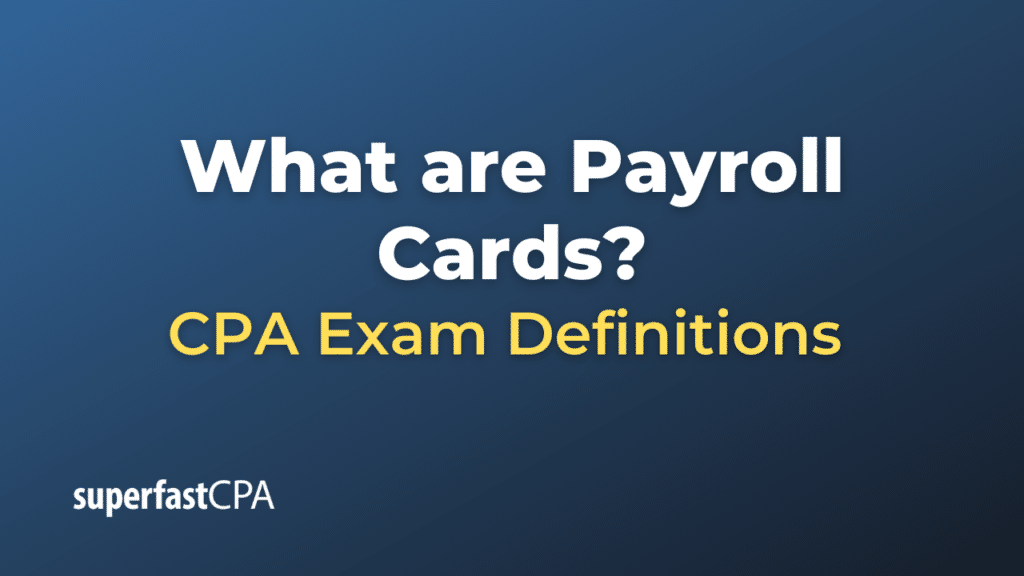Payroll Cards
Payroll cards, also known as pay cards, are a type of prepaid card onto which an employer loads an employee’s wages or salary each pay period. They provide an alternative to direct deposit or paper checks. These cards are typically Visa or MasterCard branded and can be used at ATMs to withdraw cash, or at stores and online for purchases, much like any other debit card.
Payroll cards can be particularly useful for employees who do not have traditional banking relationships (the “unbanked”) and would otherwise have to use expensive check-cashing services. However, it’s important for employers to understand that while offering payroll cards can be an added convenience, they cannot require employees to receive their wages on a payroll card, according to federal law in the United States. Employees must be given the choice of receiving their wages via direct deposit or paper check.
It’s also important to be aware that some payroll cards come with fees, which can include charges for ATM withdrawals, balance inquiries, and inactivity. Employers who offer payroll cards should ensure that their provider offers clear disclosure of all fees, and that employees have a way to access their pay without incurring fees.
Example of Payroll Cards
Let’s take a hypothetical example of a company named “Smith Retailers”.
Smith Retailers employs a diverse range of employees, including some who do not have access to traditional banking services. To accommodate these employees and ensure they can access their wages conveniently, Smith Retailers partners with a financial institution to offer payroll cards.
Here is how it might work:
- Issuing the card: Smith Retailers works with its bank to issue a payroll card to each participating employee. These cards work much like a debit card, but instead of being linked to a bank account, they are a type of prepaid card.
- Loading the card: On each payday, Smith Retailers deposits the employee’s net wages directly onto the payroll card. The card is then loaded with the employee’s net pay.
- Using the card: Employees can then use the payroll card just like a debit card. They can make purchases at stores, pay bills online, or withdraw cash from an ATM. In this case, let’s say one of the employees, John, uses his payroll card to buy groceries at a local store and pays using his payroll card.
- Understanding fees: Smith Retailers makes sure that the fees associated with the payroll card are transparent and well-understood. They chose a card with minimal fees and made sure employees have an option to withdraw their pay at least once per pay period without a fee.
- Access to balance information: John can check his card balance at any time online, over the phone, or via text message alerts to know how much money is left on his card.
This is a simplified example and actual experiences can vary depending on the specific features and fees associated with a given payroll card program.













